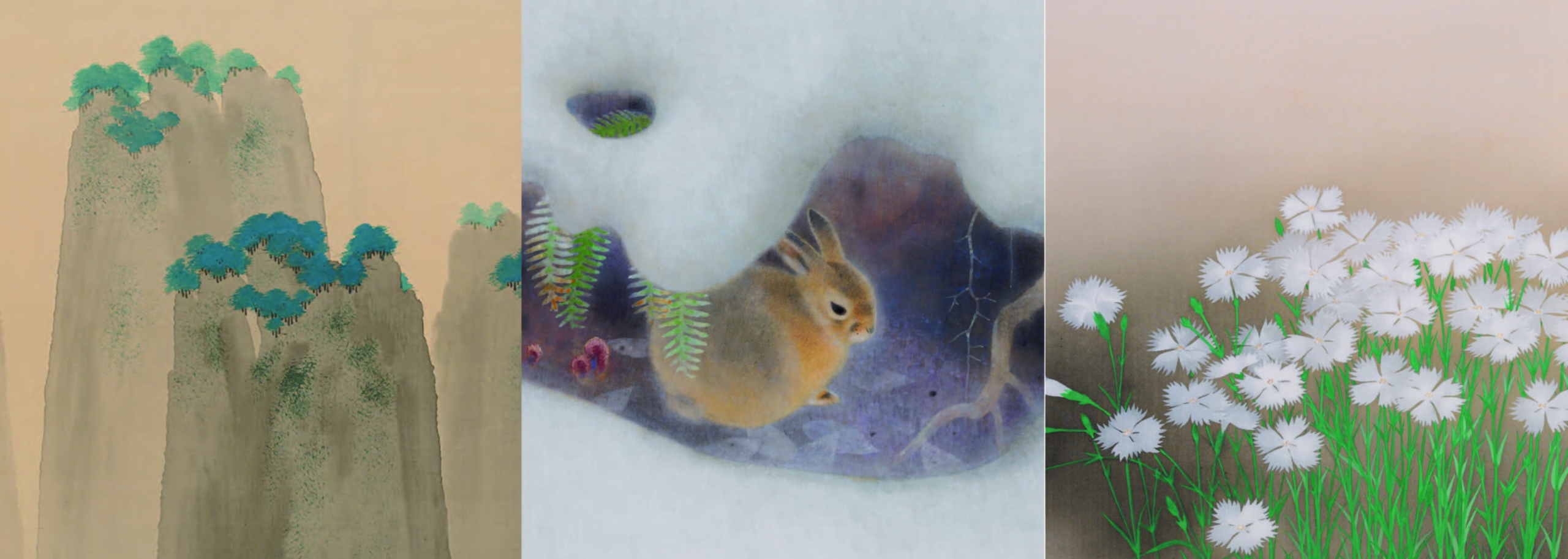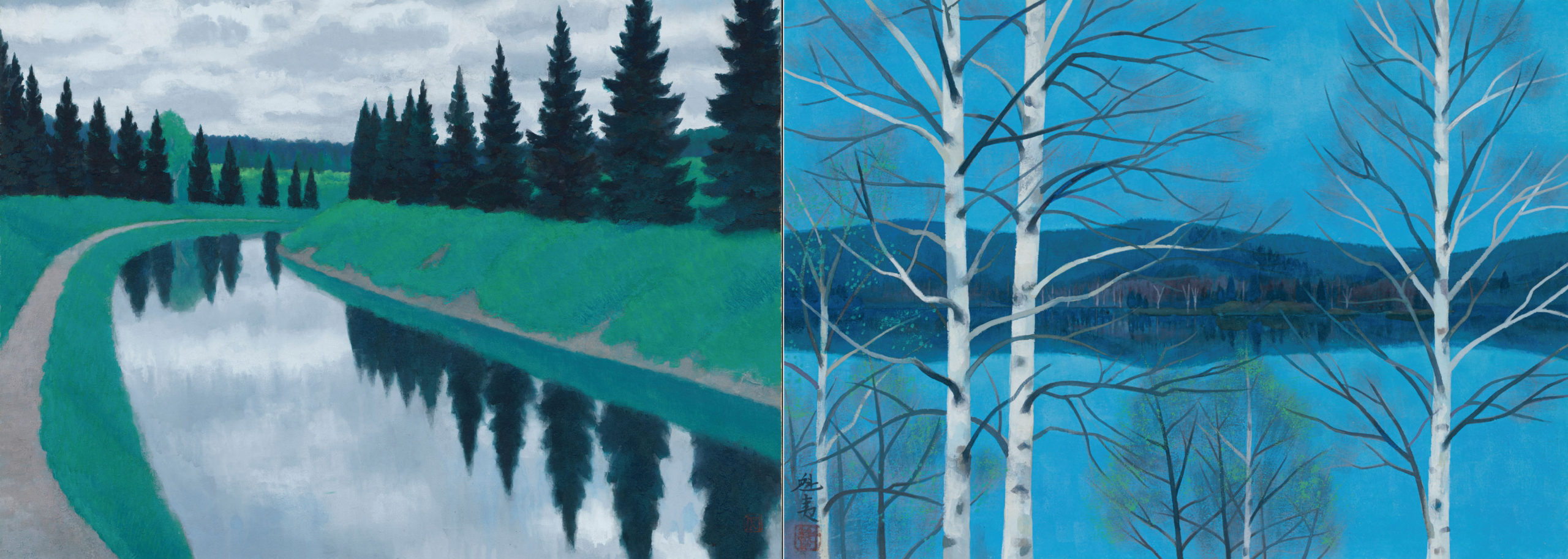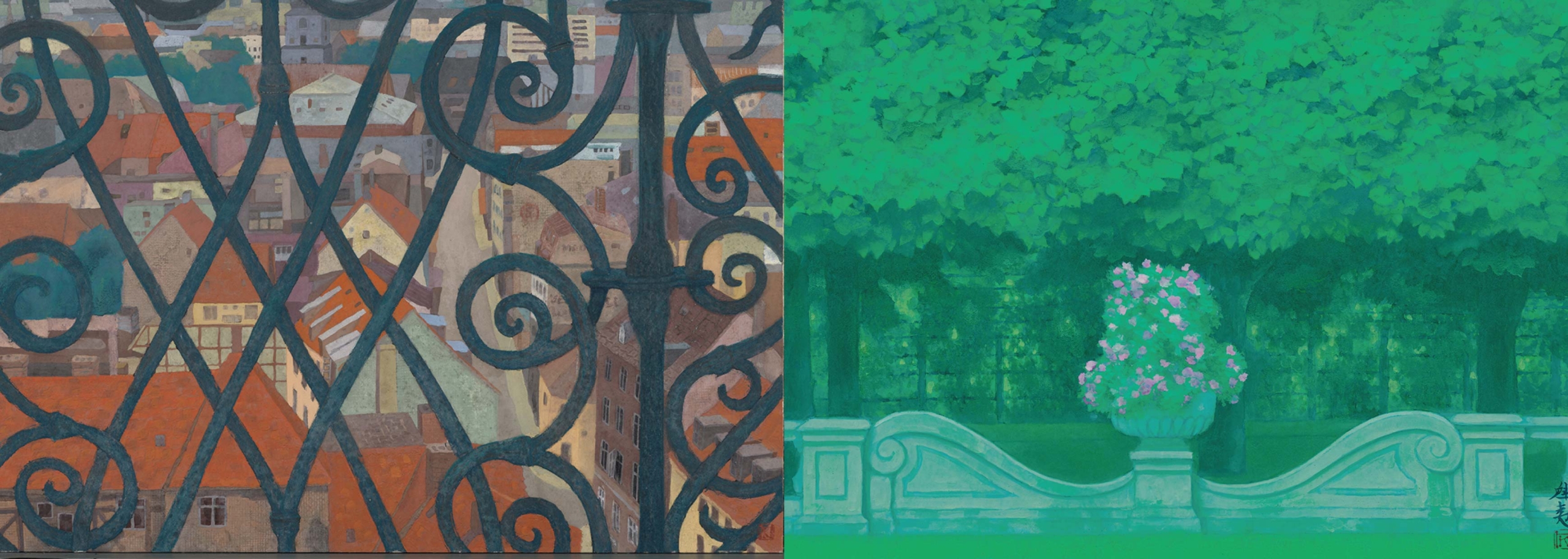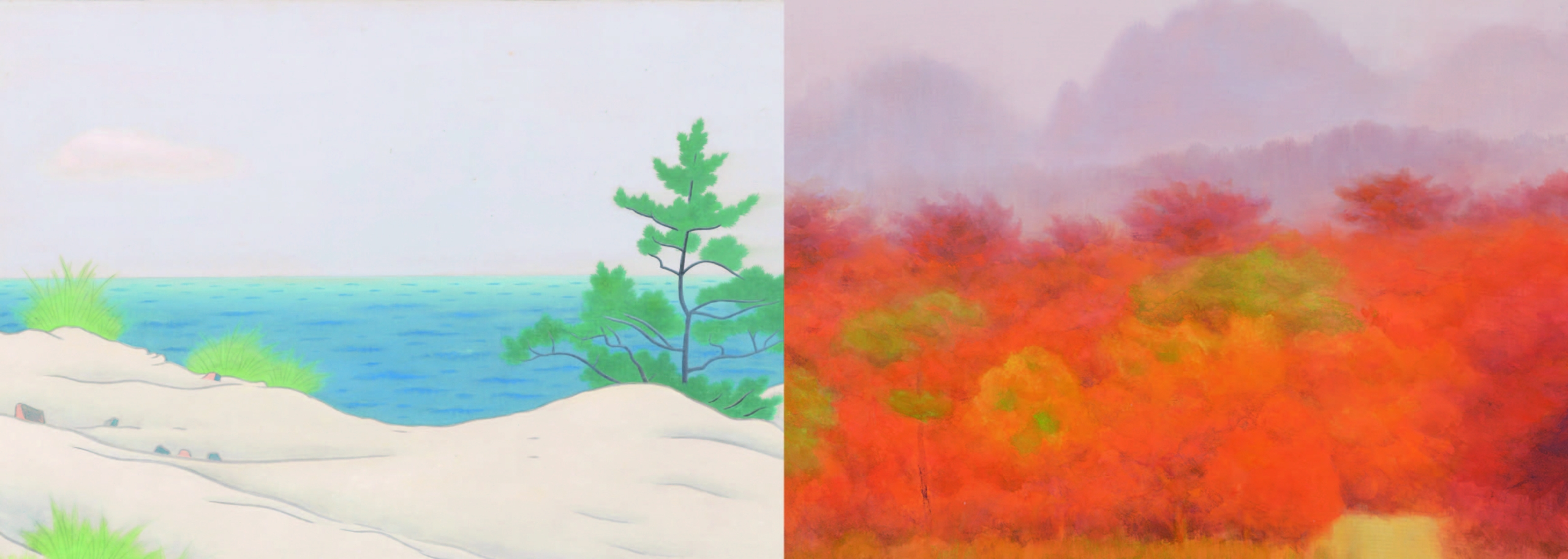Nihonga Revolution
At present, the Fukuda Museum of Art has a collection of approximately 1,800 objects. The Fukuda Collection has now been extended to include approximately 200 works from the collection of Kenji Yamamoto, one of the country’s leading art collectors. The collection includes masterpieces by famous painters active from the Meiji to Showa periods, further enriching the museum’s modern Japanese painting section.
This exhibition introduces masterpieces from the new collection by artists who revolutionised the world of modern Japanese painting. Feel the power of the painters who renewed Japanese painting!
Chapter 1: A New Frontier of Japanese Painting
Modern Japanese painting has a completely character from the preceding Edo period. While rooted in tradition, the revolutionary artists were intent on expressing their individuality in completely original ways. In Gallery 1, you can view works by artists who were given the opportunity to exhibit at the annual Inten Exhibition held by the Japan Art Institute, which was founded by Okakura Tenshin. Among these pioneering painters who brought Japanese painting into the modern age Yokoyama Taikan and Hishida Shunsō. Among works by the next-generation artists, who breathed new life into Inten, which had declined in influence owing to the founders death and other factors, you can also see works by the so-called “Three Crows of Inten”: Yasuda Yukihiko, Kobayashi Kokei, and Maeda Seison. Although the modernizing impetus was strongest in Tokyo, even in Kyoto, where tradition is revered, painters such as Tokuoka Shinsen and Yamaguchi Kayō became standard-bearers of the revolution. Kyoto artists were determined to not to follow the lead of Tokyo. You can sense the excitement of the time as you view works that sought fresh, new ways of seeing.

Chapter 2: Twin Peaks of Kaii & Matazō
In the upheaval following the end of the war in 1945, many questioned the value of Japanese culture. In the art world, some advocated that nihonga painting should be entirely abandoned and others that it was of minor importance. People in Japan started to question the meaning of Japanese art. The theme of this exhibition, Nihonga Revolution, was at its height during this period. Postwar Japanese painters soon found a new forum for their talents in the Nitten exhibition, established in 1946. Attracting attention for stylistic innovations, three artists with the kanji for mountain in their names―Higashiyama Kaii, Sugiyama Yasushi, and Takayama Tatsuo―became the ‘The Three Peaks of Nitten’. Even so, this trio excluded one of the most talented painters of the postwar period Kayama Matazō, who also has yama in his name. In Gallery 2, you can witness both the symbolic and fantastical blue-based style of the ‘Kaii Revolution,’ which took the art world by storm with its, and the ‘Matazō Revolution,’ which pushed the boundaries of the essential decorative beauty of nihonga and found worldwide acceptance. We hope you can admire the heights reached by the twin peaks of Kaii and Matazō, painters who steadfastly worked through the turbulent post-war period.


Chapter 3: Twin Peaks of Kaii & Matazō
This exhibition is consisted of the works from collection of the late Yamamoto Kenji. From coastal shipping, Mr. Yamamoto extended his family’s shipping business to domestic ferry routes, which support distribution of goods in Japan and to global maritime transportation in international waters. He was also indulged his interest in art. Born in Kure City, Hiroshima Prefecture, a port town on the Seto Inland Sea, he collected many paintings of the local Chūgoku region, seascapes, and works with maritime themes. In the Panorama Gallery you can also see works the famous Chūgoku artist Ono Chikkyō. He was born in Kasaoka City, Okayama Prefecture and continued to paint local scenes throughout his life. Featured also is Okuda Gensō, a nihonga painter from Hiroshima Prefecture. Please enjoy how the intense reds of Gensō add grandeur to majestic landscapes, and how Chikkyō’s distinctive use of color helps us to see the ordinary world in a different way.

Exhibition Introduction on YouTube (in Japanese)
Exhibition Overview
| Title | Nihonga Revolution – Kaii, Matazō and other standard-bearers of modern Japanese painting |
|---|---|
| Dates |
January 28 (Sat.) 2023 to April 9 (Sun.) 2023 |
| Opening Hours | 10:00 am – 5:00 pm (last entry 4:30 pm) |
| Closed |
Tuesday |
| Entry Fee |
General / University student: ¥1,300 (¥1,200) * Prices in parentheses are for groups of 20 or more. |
